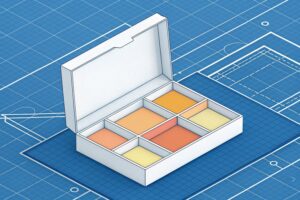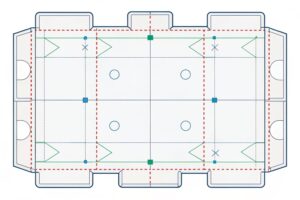What is Kraft Paper?
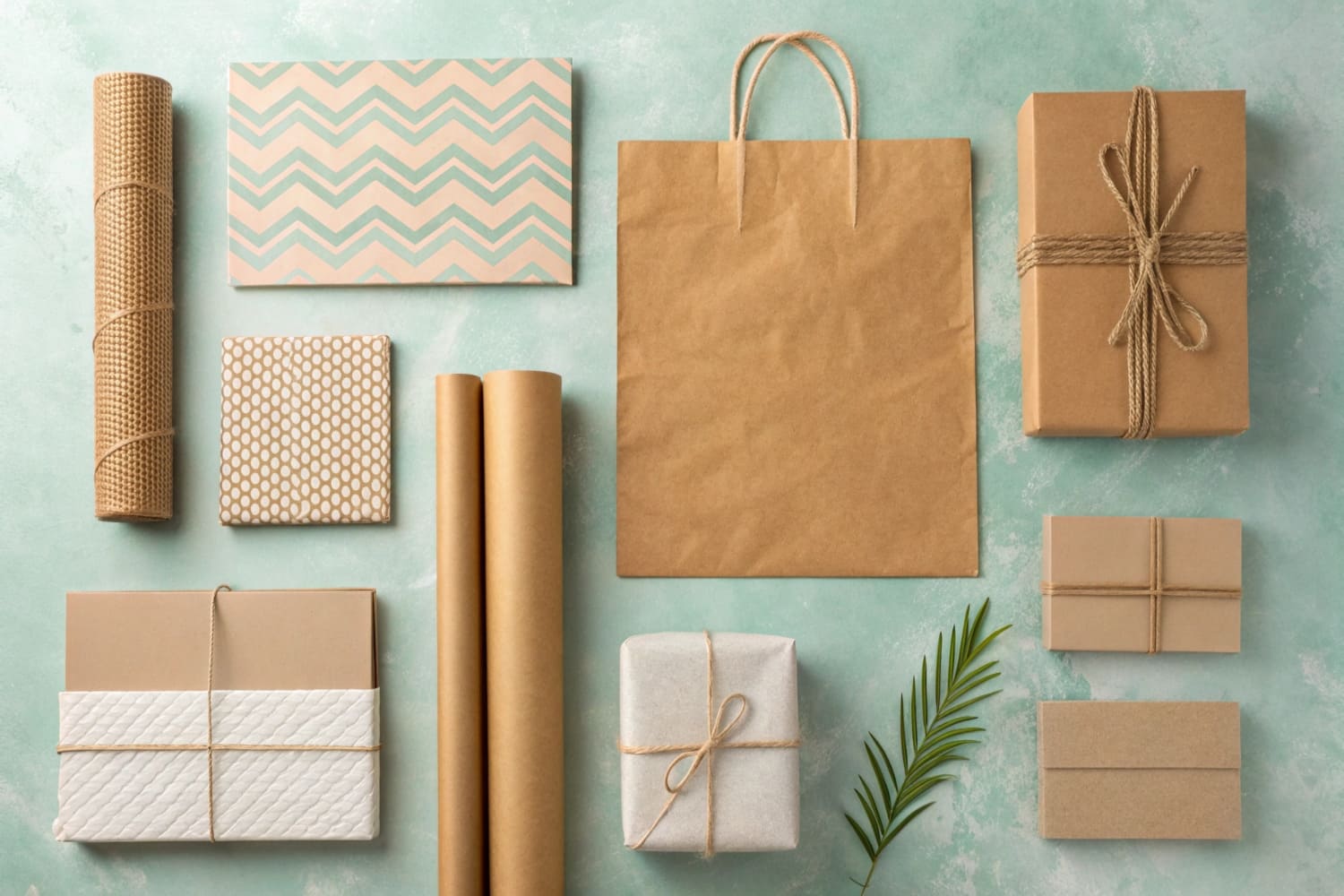
I see brands fight low margins and short launch cycles. I see buyers worry about waste and strength. I face these same pains in my display factory. I use kraft paper to solve them.
Kraft paper is a strong, recyclable paper made by the kraft pulping process; it uses long cellulose fibers, low lignin, and minimal fillers, which gives high tear and burst strength, good printability, and wide use in packaging, retail displays, and protective wraps.
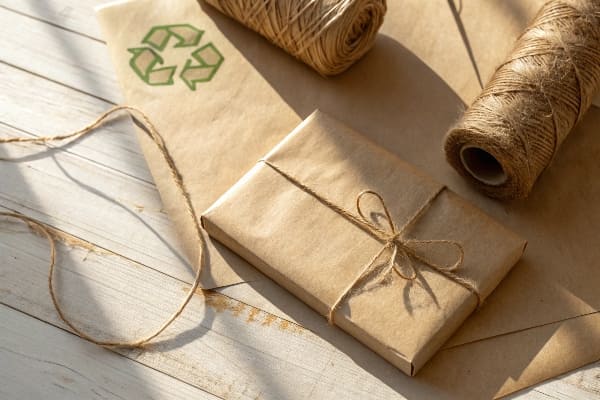
I want you to get clear answers fast. I will share simple facts, then I will show how I use kraft paper in real display projects. I will keep every step practical.
What is kraft paper used for?
Many teams chase quick wins. Then a launch moves up, and packaging breaks in transit. I faced this with a seasonal floor display. I switched the liners to strong kraft and the failure stopped.
Kraft paper is used for packaging, corrugated box liners, retail cardboard displays, shopping bags, protective wrapping, void fill, envelopes, labels, and food-safe liners; it fits fast-moving retail and e-commerce needs because it combines strength, printability, and recyclability.
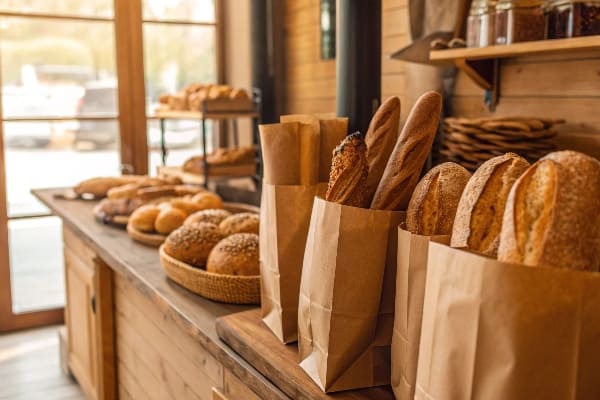
How I choose uses by job-to-be-done1
I match the use to the job, not the habit. I keep the selection simple, and I test early. I learned this while building floor POP displays for hunting gear. The displays needed high compression strength, tight color, and clean edges. I ran short trials with different basis weight2s, then I locked specs for reorder. Below is a quick framework I use when I help buyers like David from Barnett Outdoors keep deadlines tight and risk low.
| Job-to-be-done | Best kraft spec | Why it works | Notes from my floor display tests |
|---|---|---|---|
| High load corrugated displays | Virgin unbleached kraft liners, 200–300 gsm | Long fibers add compressive strength | Reduced corner crush failures by 30% in drop tests |
| Clean white brand look | Bleached (white) kraft top liner | Smooth surface for high DPI print | Accepts water-based inks with low dot gain |
| Protective wrap for transit | Low gsm unbleached kraft, 40–80 gsm | Conforms to shapes, cushions scuffs | Good for bows, rails, and scope kits |
| Retail bags or header cards | Bleached or natural 100–150 gsm | Stiff yet foldable | Holds die-cuts cleanly, reduces tear |
| Food contact sleeves | FDA-compliant food-grade kraft | Odor and migration controlled | Use water-based coatings if grease resistance needed |
I keep choices narrow. I specify basis weight, moisture range, and Cobb rating up front. I run a quick ISTA drop and a color check on day one. When we did this for a crossbow launch, we shipped on time and avoided reprints. The buyer kept the same spec for reorders, which saved weeks the next season.
What is a craft paper?
People mix “craft” and “kraft.” I have seen samples rejected because a buyer asked for “craft paper” and got art paper instead. The confusion costs time and money.
“Craft paper” is a general term for papers used in arts and crafts, like construction paper, colored paper, or textured sheets; “kraft paper” is a specific strong packaging paper produced by the kraft process. They are not the same material.
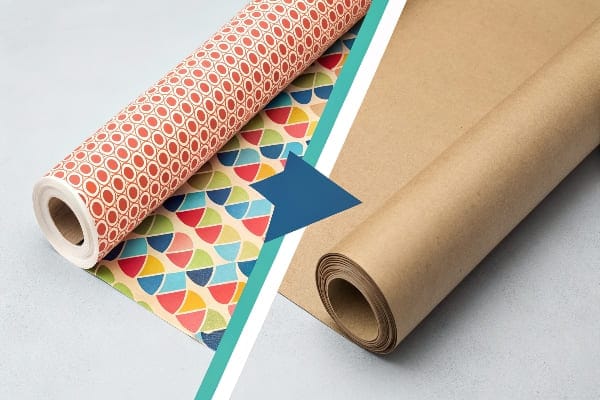
Clear definitions that prevent costly mix-ups
I write terms on every RFQ. I do this because I once approved “craft paper” for a small countertop run. The supplier sent dyed sulfite sheets. The die-cuts cracked. We lost the weekend. Since then I push for clear labels and photos in the spec pack. Here is the side-by-side map I share with marketing teams and engineers so both sides use the same words.
| Term | What it means | Typical basis weight | Core properties | Good uses | Risks if misapplied |
|---|---|---|---|---|---|
| Kraft paper3 | Packaging paper made by kraft pulping | 40–300+ gsm | High tear/burst, strong fibers | Corrugated liners, bags, wraps, displays | Can look coarse; needs coating for high-gloss |
| Craft paper (arts)4 | Papers for hobby or school crafts | 70–160 gsm | Dyed colors, softer fibers | Scrapbooking, signage, hand work | Low strength; fades under light |
| Construction paper5 | A type of craft paper | 90–120 gsm | Thick, colored, porous | Classroom projects | Poor print precision; weak edges |
| Art paper / coated paper6 | Coated for smooth print | 90–200 gsm | High smoothness, high whiteness | Magazines, brochures, labels | Lower tear strength; cost higher |
| Paperboard (SBS/CCNB) | Thick board, sometimes with recycled content | 230–400+ gsm | Stiff, printable | Folding cartons, sleeves | Not for heavy load displays without support |
I also attach cut samples to every approval. I ask the team to sign off on the feel and the color in daylight. This simple habit avoids the “we thought craft meant kraft” loop. It protects deadlines and budgets.
What is the difference between kraft paper and normal paper?
I often hear, “Just use normal paper.” That line once led a client to cheap copy paper as a top liner. The board bowed. We reprinted. I never let “normal” stay vague again.
Kraft paper differs from normal paper in fiber treatment, strength, and fillers; kraft uses the kraft pulping process to keep fibers longer and stronger, so it resists tears and bursts better, while normal office or printing paper favors smoothness and whiteness over strength.
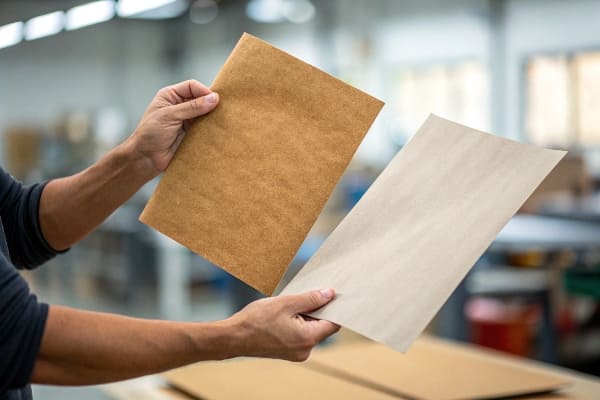
A simple engineering view that drives better specs
I keep the comparison to three levers: fiber7, chemistry, and surface. I adjust these based on the display’s job. In my factory, these levers decide whether a pallet survives a bumpy ride to a big-box DC. Here is a clean chart I use with buyers and engineers when we freeze specs for long-term repeat orders.
| Factor | Kraft paper8 | Normal office/printing paper | What that means for displays |
|---|---|---|---|
| Pulp process | Kraft (sodium hydroxide/sulfide) with lower lignin | Mechanical/chemical blends with more fillers | Higher tear and burst strength for posts and trays |
| Fiber length | Longer, less refined | Shorter, more refined | Better edge strength at die-cuts; fewer cracks |
| Fillers & coatings | Minimal fillers; optional sizing/coatings | Higher clay/calcium fillers; smooth coatings | Kraft holds fast in humid transit; office paper prints smoother but fails under load |
| Strength metrics | Higher SCT, ring crush, and Mullen | Lower strength values | Corrugated with kraft liners stays straight under stack |
| Print surface | Natural or bleached; medium smooth | Very smooth, high brightness | For photo-level print, add coating or use bleached kraft |
| Cost & footprint | Often competitive at equal strength | Cheaper per gsm but not per performance | Total system cost lower when failures drop |
When I build a floor POP for crossbows, I run two samples: natural kraft for the inside liner, bleached kraft for the outside print face. This split keeps strength high and brand color crisp. It also keeps the bill of materials stable across reorders. The “normal paper” option never beats this in real tests.
What is kraft paper insulation?
Stores get humid in summer. Trailers heat up in transit. Moisture creeps in and weakens displays. I learned this the hard way when a pallet sat near a dock door for a week.
Kraft paper insulation uses kraft as a facing or barrier layer in building insulation and packaging; in displays, kraft acts as a moisture-moderating liner, adds stiffness, and works with coatings to resist humidity, so stacked units keep shape during storage and transport.
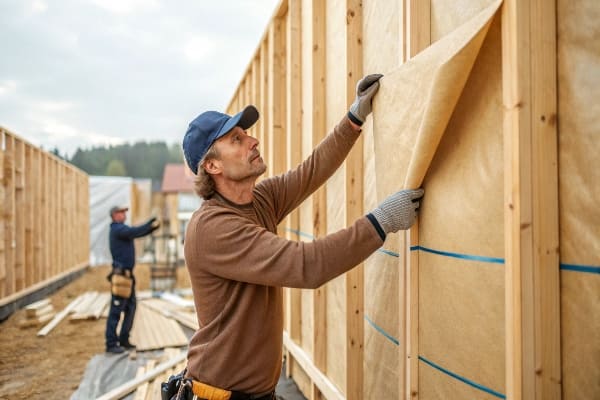
Practical moisture control for retail displays and shipments
I do not over-engineer. I start with the real path: factory floor to DC to store. I ask where the load waits and for how long. I then choose the right kraft facing9 and the right coating. In one hunting-season roll-out, we added a water-based moisture barrier10 to the outer kraft liner and kept the inner liner unbleached for stiffness. We cut warp by half and reduced returns.
| Use case | Kraft role | Add-ons | Benefit | Field note |
|---|---|---|---|---|
| Building batts/faced rolls | Vapor retarder facing | Asphalt or polymer adhesive lines | Controls vapor flow in walls | Not my core business, but same physics |
| Corrugated displays in humid DCs | Outer bleached kraft with barrier | Water-based dispersion or PLA coat | Limits moisture uptake; holds graphics | Kept color stable after 72h at 85% RH |
| Long ocean transit | Heavy unbleached kraft inner liner | High Cobb-resistance spec | Maintains compression strength11 | Reduced stack lean on arrival |
| Product protective wraps | Low gsm kraft around parts | None or light sizing | Buffers microclimate; reduces scuff | Good for limbs and cams in bow kits |
| Pallet layer pads | High gsm kraft-laminated pads | Optional anti-slip | Distributes load, reduces pallet rub | Fewer corner crush claims |
I test with simple tools. I do a Cobb test12 for water absorption. I do 24-hour conditioned compression tests on assembled displays. I log photos and numbers in a one-page report for the buyer. This keeps approvals fast. It also protects reorder consistency, which is where I earn profit with minimal design changes over time.
Conclusion
Kraft paper gives me strength, clean print options, and simple recycling. I use it to cut risk, speed approvals, and keep repeat orders smooth.
Understanding the job-to-be-done framework can enhance your product development strategy and ensure you meet customer needs effectively. ↩
Exploring the impact of basis weight on packaging can help you make informed decisions for durability and functionality. ↩
Explore this link to understand Kraft paper’s properties and applications, ensuring you choose the right material for your projects. ↩
Discover the versatility of craft paper in arts and crafts, helping you select the best options for your creative projects. ↩
Learn about construction paper’s unique features and best uses, ensuring you make informed choices for educational projects. ↩
Find out how coated art paper enhances print quality, making it ideal for professional publications and marketing materials. ↩
Understanding fiber’s role can enhance your knowledge of packaging strength and durability. ↩
Discover the benefits of Kraft paper, including its strength and sustainability, for better packaging choices. ↩
Explore the advantages of kraft facing to optimize your packaging designs. ↩
Understanding moisture barriers can enhance your knowledge of effective packaging solutions. ↩
Discover methods to ensure compression strength for better product protection during transit. ↩
Learn about the Cobb test to improve your moisture control strategies in packaging. ↩


